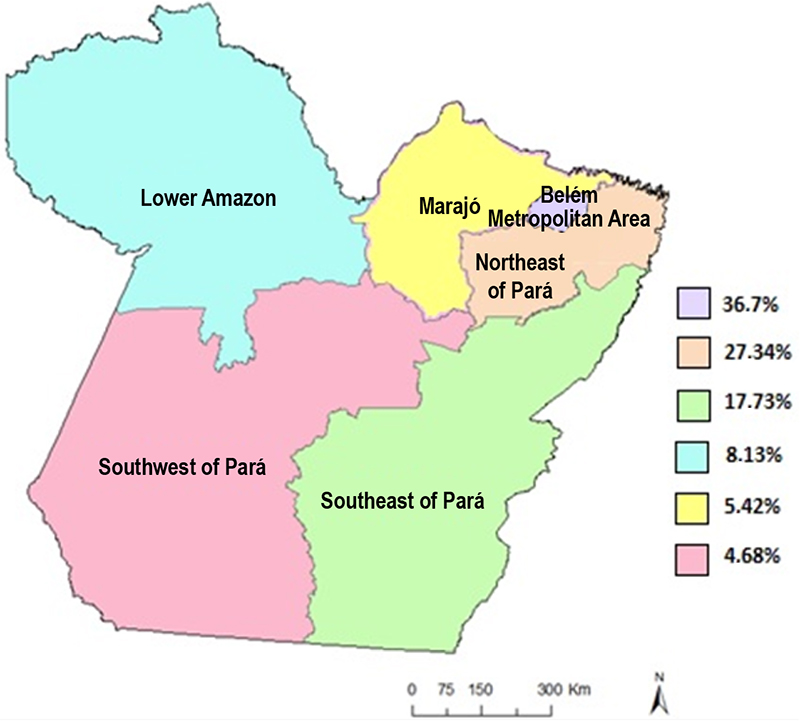Volume 31, Nº 4, July and August 2018
DOI: http://www.dx.doi.org/10.5935/2359-4802.20180035
ORIGINAL ARTICLE
Waiting for Cardiac Procedure in Congenital Heart Disease: Portrait of an a Hospital in the Amazonian Region
Valeria Santos de Jesus
Aline Marques Nascimento
Rogério dos Anjos Miranda, Joel Silva Lima
Milene de Andrade Gouvea Tyll
Adriana de Oliveira Lameira Veríssimo

Figure 1 - Distribution of patients waiting for elective pediatric cardiac procedures according to the place of residence in mesoregions.
Abstract
Background: Congenital heart disease is an important cause of morbidity and mortality in childhood, and in 50% of cases, surgery is required in the first year of life. A high deficit of surgical procedures is estimated in Northern Brazil.
Objective: To analyze the waiting time for elective surgical treatment and/ or intervention in children with congenital heart disease in a Cardiology referral center, and to make considerations about heart diseases and forms of treatment in that institution.
Methods: A cross-sectional study of all patients aged less than 14 years, with a diagnosis of congenital heart disease that were waiting for elective surgical or percutaneous cardiac treatment.
Results: Among the 407 children with congenital heart defects, the most prevalent age group was > 2 to 6 years (34.0%). The average waiting time was 23.1 ± 18.3 months, with a median of 19. The most frequent heart disease was ventricular septal defect (28.98%), patent ductus arteriosus (18.42%) and atrial septal defect (11.05%). Most children (63.4%) were not from the metropolitan area. The percutaneous interventions represented only 27.84% of the catheterization procedures and 14,85% of all heart treatments. Approximately 60% of the pediatric surgeries occurred in children who were not previously registered due to urgency cases.
Conclusion: Most of the children waiting for a cardiac procedure were not from the metropolitan area and had malformations potentially treatable by catheterization. It is necessary to increase the capacity of the single referral center in the state of Pará, as well as decentralize the high-complexity cardiological care in the metropolitan region. (Int J Cardiovasc Sci. 2018;31(4)374-382)
Keywords: Heart Defects, Congenital / therapy; Waiting Lists; Heart Defects, Congenital / surgery; Epidemiology.











